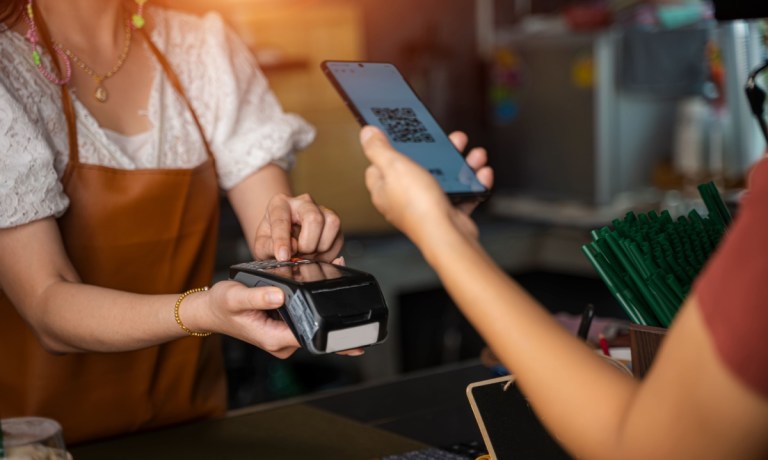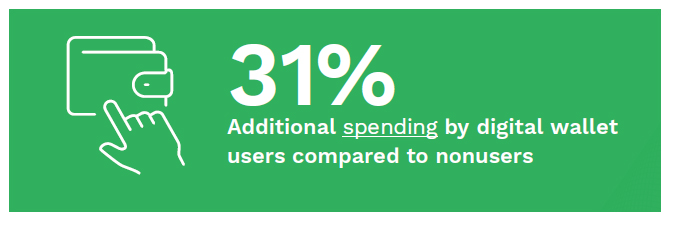
Digital wallets are rapidly transforming the payments landscape, with projections indicating they will surpass debit cards in transaction value within three years. This transition highlights the role of digital wallets not only as a payment option but also as a versatile tool that boosts consumer engagement and spending.
A recent PYMNTS Intelligence report, “Top of Wallet: Digital Wallets’ Ascent for Payments — and More,” in collaboration with Ingo Payments, explores how digital wallets became more prevalent, giving merchants both opportunities and challenges in adapting to this trend.
Digital wallets are on track to outpace debit cards in transaction volume at physical points of sale by 2027, according to a recent Worldpay report. The report reveals that digital wallets are used by 53% of Americans and are set to dominate nearly half of all point-of-sale (POS) transactions globally by the end of the decade. The value of transactions made via digital wallets is expected to double from 15% to 31% by 2027, while debit card transaction value will decrease from 28% to 23% over the same period.

A driver behind this shift is the convenience of digital wallets, which leads to increased consumer spending. Digital wallet users, on average, spend 31% more than those using other payment methods. The trend is particularly pronounced among younger generations, with 60% of Gen Z and 51% of millennials reporting higher spending when using digital wallets. High-income earners also exhibit a propensity to spend more with digital wallets, with 61% of individuals earning over $150,000 annually indicating increased expenditure.
Despite the clear consumer preference for digital wallets, merchant adoption remains inconsistent. Only 57% of small businesses currently accept digital wallet payments, compared to nearly universal acceptance of credit and debit cards. This gap presents an opportunity for businesses that are quick to adapt. The hesitancy among merchants stems from concerns about the cost and complexity of technological upgrades, as well as fears regarding security and fraud.
A recent J.D. Power report highlights that 22% of merchants do not accept credit cards and 21% do not accept debit cards due to fraud concerns, which suggests a similar reluctance toward digital wallets. The perceived complexity of integrating digital wallets into existing POS systems is another barrier. But the report notes that upgrading to NFC-capable card readers is relatively affordable, with costs ranging from free to $500, depending on the provider.
The functionality of digital wallets is evolving beyond simple transactions. Consumers are interested in using digital wallets for a variety of purposes, such as storing driver’s licenses, passports and event tickets. According to PYMNTS Intelligence, 45% of consumers are eager to use digital wallets for new money mobility options, including account-to-account transfers and recurring payments.
The demand for expanded features is particularly strong among younger consumers, with 66% of Gen Z indicating they would switch providers to access new features. This trend is reflected in the broader consumer base, with 37% of customers willing to change digital wallet providers for enhanced functionality. Merchants need to recognize that offering comprehensive digital wallet services can not only meet consumer expectations but prevent potential loss of business to competitors offering more advanced features.
Digital wallets are expected to surpass debit cards in transaction volume within a few years, driven by their convenience and users’ increased spending power. Merchants face challenges in adopting this technology due to security concerns and the need for system upgrades. To stay competitive, businesses must address these issues and enhance digital wallet features to meet consumer demands. As digital wallets become more popular, they will influence both payment methods and consumer engagement.